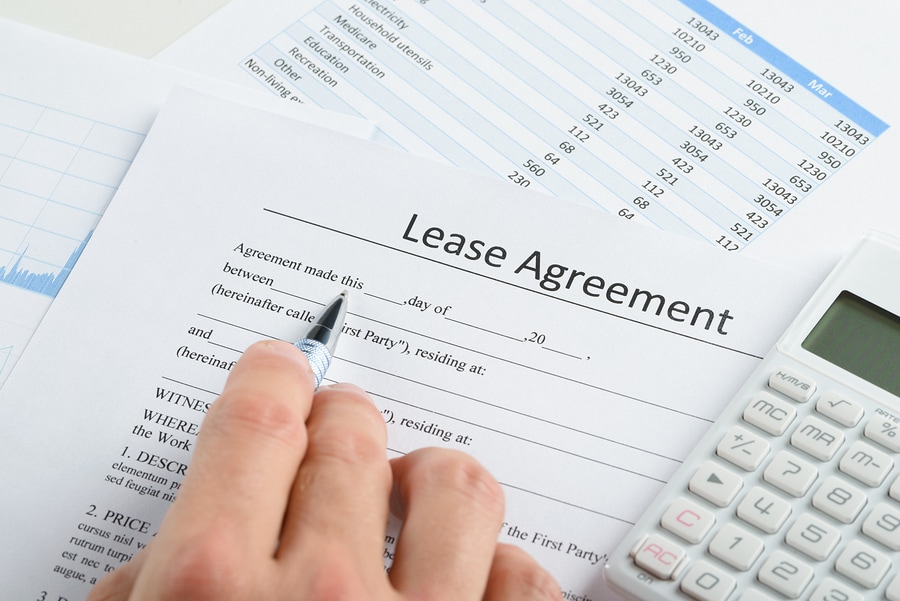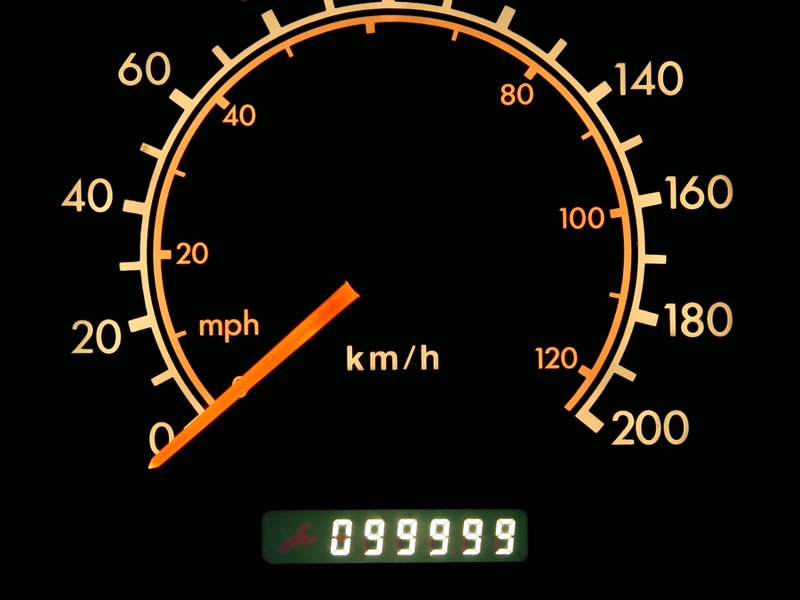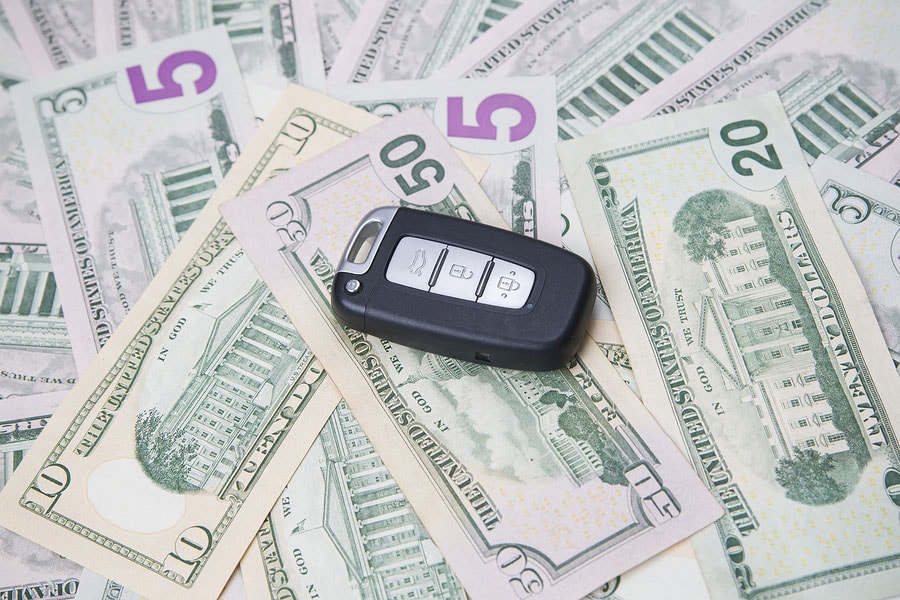Recent Articles
Popular Makes
Body Types
How to Negotiate a Car Lease

Leasing a vehicle has become extremely popular with consumers, and it is not hard to see why. As car prices have continued to skyrocket — and they are the highest they ever have been right now — leasing is a way to obtain a vehicle for a lower monthly payment than if it were purchased. Another plus for leasing is that consumers can most often get into a leased vehicle with smaller out-of-pocket expenses than they would be required to pay if they were to buy the same vehicle.
For reasons like these, it's estimated that close to 30% of those who will take delivery of a new car, truck, SUV, or minivan will lease it rather than buying it. The leased percentage is lower on used vehicles, but the number of people who lease used cars is increasing. What a lot of people who lease might not know is they are probably leaving a lot of money on the table that could have stayed in their checking accounts if they had made a concerted effort to negotiate the lease. To help you avoid that indignity, here is our advice on how to negotiate a car lease.
What Is a Lease?
While buying a new car should not be simply about trying to find the lowest monthly payment possible, a lot of consumers think it is. And for that reason, leasing has gained a significant amount of popularity in the past several decades as vehicle prices have continued to increase.
Leasing a new or used vehicle typically offers consumers lower monthly payments than those associated with purchasing the same vehicle. There is no doubt about that. And many shoppers conclude after seeing the monthly payment comparison between a purchase and a lease that the lease is a better deal. We're not going to argue that point here, but instead, we will tell you why that monthly payment is lower.

What a Lease Buys You
The lower payment stems from what the consumer is actually obtaining. A consumer buying a car with the typical installment (monthly) payment loan is purchasing the vehicle. When the last payment is made the consumer will own it, pure and simple.
With a lease, on the other hand, the consumer is not purchasing the vehicle but is instead contracting for the use of the vehicle over a pre-determined period of time. Further, there are other stipulations that go with the deal — things like mileage limits and return condition requirements. When the lease term is over, the lessee doesn't own the car; the financial institution that funded the lease owns it. That's why the monthly payment for a typical lease is so much lower than for a typical car loan on the exact same vehicle. The consumer is just buying the use of the car, not the car itself.

Key Leasing Terms
We're not trying to talk you out of leasing. Since you are reading this article, we assume you plan to lease a vehicle, and our goal is to make that process better and less expensive for you. Right off the bat, if you are planning to negotiate a lease, you must become familiar with leasing terminology. And it can be mystifying. For instance, you will have to be familiar with terms like capitalized cost, residual value, and the money factor.
Here is a short course on the definitions of terms you will need to understand to negotiate your lease to your best advantage.

Capitalized Cost & Residual Value
The capitalized cost (sometimes abbreviated in dealership language as "cap cost") is the price the finance company will pay the dealership for the vehicle being leased. This cost is critical in determining what the consumer's monthly payments will be. The lower the capitalized cost the lower the monthly payments, all other things being equal.
The residual value is the official estimate of what the vehicle will be worth at the end of the lease. Experts pre-determine this value, and it will be memorialized in the terms of the lease. When one subtracts the residual value from the capitalized cost you have a snapshot of the monetary value a lessee is buying when they lease the vehicle over the period of time specified in the lease.

Money Factor & Lease Term
Leasing a vehicle is a form of financing just as obtaining a monthly installment loan is. Both require the payment of interest on borrowed money, but while the interest rate on a loan is fairly easy to determine, the interest rate on a lease is less obvious. In a lease, the interest rate is expressed in a term known variously as the money factor, lease factor, or lease rate. It is an algebraic expression of the interest rate on the lease, but you need to do some math — sorry — to get to the interest rate. You can determine the interest rate a given money factor represents by multiplying it by 24 and then converting the resulting decimal to a percentage.
To negotiate a car lease to your best advantage, you need to know the interest rate you are being charged on your lease so you can compare it to currently available interest rates. The lease term is the length of the lease — most often 24 or 36 months. One way a dealer can lower the monthly payment is by lengthening the lease term.

Mileage Limits & Other Restrictions
When someone leases a vehicle, the finance company that originated the lease is their "landlord" for the vehicle. They own it. The lessee is contracting to use it. Like a landlord, the financial institution wants the vehicle to be in good condition when the lease is over. So they limit the number of miles the lessee drives it and require that the vehicle is in good condition when it is returned.
In a typical 36-month lease, the lessee is restricted to driving no more than 36,000 total miles. And now carmakers are offering "low-mileage" leases that limit lessees to 30,000 miles. Lessees who exceed the mileage limits are charged for each "excess mile," and the charge is expensive.

What You Should Negotiate
When you negotiate your lease deal, it is very helpful to know what items you should deal with... and which items are essentially set in stone. A key non-negotiable item is the vehicle's residual value. Dealers and financial institutions rely on independent experts to arrive at the residual value predictions, and they typically don't stray from those recommendations. So leave the residual value alone because you have other levers to pull in your negotiations. Focus your efforts on the price of the vehicle, the lease rate, money factor, lease factor, and the mileage limit. All of these are typically in play during a lease negotiation.

Photo by kodt - stock.adobe.com
Negotiate Vehicle Price
As we explained earlier, the price of the vehicle is referred to as the capitalized cost, or "cap cost." That is what the financial institution acquiring the vehicle from the dealership will pay for the car. So negotiating a lower price will narrow the gap between the capitalized cost and the residual value. That gap will be instrumental in determining what you pay per month and what you pay in total. The smaller the gap the lower your monthly payment will be, all other things being equal. But, oddly, most lessees don't attempt to negotiate the capitalized cost downward.
"I don't think I've ever seen a customer do this in a dealership," Don Fuller, a former car salesperson and sales trainer, told us. "I've never seen a lease customer make a concerted effort to negotiate cap cost."
This is especially odd because if they were purchasing the car, they would probably make every effort to get the price paid for the car down. When you negotiate the lease, suggest a capitalized cost that is well below the dealer's initial asking price and negotiate diligently to get that price down.

Photo by Adobe Stock
Negotiate Financing
Beyond purchase price/capitalized cost, another item worthy of negotiation is the price of the lease financing. Again, this is a bit more complicated in a lease negotiation than in a purchase negotiation because the interest rate in a lease is not obvious. As we noted earlier, in a purchase, the interest rate on the loan is expressed as a simple percentage such as 4.5 percent and a related annual percentage rate (APR). In leasing, you have to decode the money factor to determine the interest rate. We told you how to do that earlier.
Once you learn the interest rate of the lease deal in question, go on car finance websites to see how that rate compares to what is generally being offered. If it seems high, negotiate to bring the interest rate down to a market rate.

Photo by Seventyfour - stock.adobe.com
Negotiate Mileage Limit
The third item of negotiation is the mileage limit. A lessor will specify a mileage limit because it needs to have a good idea of the value of the vehicle when the lease is over. That value is the "residual value," literally the value that is left when the lease ends. If you opt for a low-mileage lease — say 10,000 miles per year — the residual value will be higher than if you opt to include 15,000 miles per year, so the monthly payment should be lower. But if you underestimate the miles you will drive, you will end up in a situation where you will pay a per-mile penalty on the total over the agreed-upon limit. Make certain the mileage limit you agree to is a number you can live with even if your life changes. As you negotiate this, give yourself some leeway without grossly overestimating the number of miles you will drive.
"Ignoring the mileage limit in making the lease deal is something that happens every day," said Eric Charles, an Illinois-based used car dealer. "People sign up for leases without ever considering how many miles they are going to drive, and it costs them."

Photo by Songwut Pinyo - stock.adobe.com